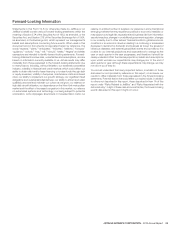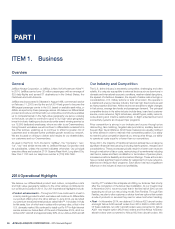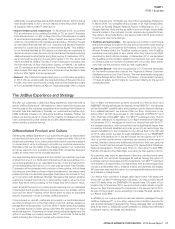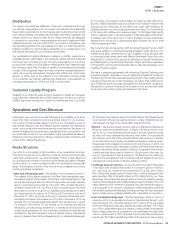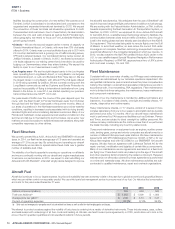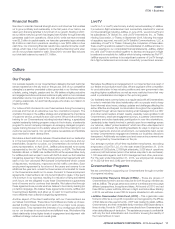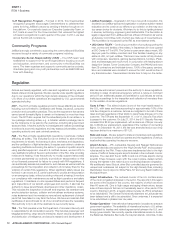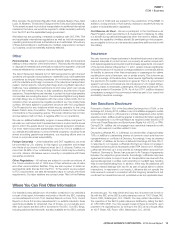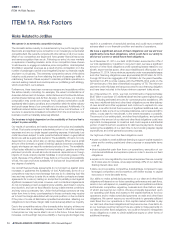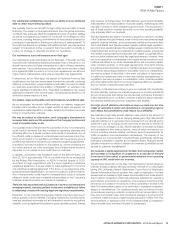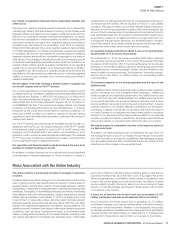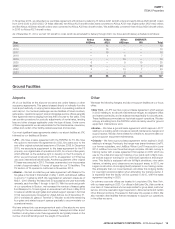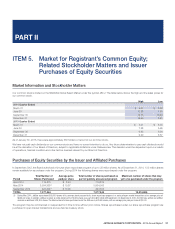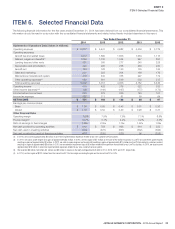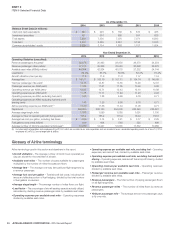JetBlue Airlines 2014 Annual Report Download - page 20
Download and view the complete annual report
Please find page 20 of the 2014 JetBlue Airlines annual report below. You can navigate through the pages in the report by either clicking on the pages listed below, or by using the keyword search tool below to find specific information within the annual report.
JETBLUE AIRWAYS CORPORATION-2014Annual Report14
PART I
ITEM1ARisk Factors
ITEM1A. Risk Factors
Risks Related to JetBlue
We operate in an extremely competitive industry.
The domestic airline industry is characterized by low profit margins, high
fixed costs and significant price competition in an increasingly concentrated
competitive field. We currently compete with other airlines on all of our routes.
Most of our competitors are larger and have greater financial resources
and name recognition than we do. Following our entry into new markets
or expansion of existing markets, some of our competitors have chosen
to add service or engage in extensive price competition. Unanticipated
shortfalls in expected revenues as a result of price competition or in the
number of passengers carried would negatively impact our financial results
and harm our business. The extremely competitive nature of the airline
industry could prevent us from attaining the level of passenger traffic or
maintaining the level of fares required to maintain profitable operations in
new and existing markets and could impede our profitable growth strategy,
which would harm our business.
Furthermore, there have been numerous mergers and acquisitions within
the airline industry including, for example, the recent combinations of
American Airlines and US Airways, United Airlines and Continental Airlines,
and Southwest Airlines and AirTran Airways. In the future, our industry
composition may continue to change. Any business combination could
significantly alter industry conditions and competition within the airline industry
and could cause fares of our competitors to be reduced. Additionally, if a
traditional network airline were to fully develop a low cost structure, or if
we were to experience increased competition from low cost carriers, our
business could be materially adversely affected.
Our business is highly dependent on the availability of fuel and fuel is
subject to price volatility.
Our results of operations are heavily impacted by the price and availability
of fuel. Fuel costs comprise a substantial portion of our total operating
expenses and are our single largest operating expense. Historically, fuel
costs have been subject to wide price fluctuations based on geopolitical
factors as well as supply and demand. The availability of fuel is not only
dependent on crude oil but also on refining capacity. When even a small
amount of the domestic or global oil refining capacity becomes unavailable,
supply shortages can result for extended periods of time. The availability
of fuel is also affected by demand for home heating oil, gasoline and other
petroleum products, as well as crude oil reserves, dependence on foreign
imports of crude oil and potential hostilities in oil producing areas of the
world. Because of the effects of these factors on the price and availability
of fuel, the cost and future availability of fuel cannot be predicted with
any degree of certainty.
Our aircraft fuel purchase agreements do not protect us against price
increases or guarantee the availability of fuel. Additionally, some of our
competitors may have more leverage than we do in obtaining fuel. We
have and may continue to enter into a variety of option contracts and swap
agreements for crude oil, heating oil, and jet fuel to partially protect against
significant increases in fuel prices. However, such contracts and agreements
do not completely protect us against price volatility, are limited in volume
and duration, and can be less effective during volatile market conditions
and may carry counterparty risk. Under the fuel hedge contracts we may
enter from time to time, counterparties to those contracts may require
us to fund the margin associated with any loss position on the contracts
if the price of crude oil falls below specified benchmarks. Meeting our
obligations to fund these margin calls could adversely affect our liquidity.
Due to the competitive nature of the domestic airline industry, at times we
have not been able to adequately increase our fares to offset the increases
in fuel prices nor may we be able to do so in the future. Future fuel price
increases, continued high fuel price volatility or fuel supply shortages may
result in a curtailment of scheduled services and could have a material
adverse effect on our financial condition and results of operations.
We have a significant amount of fixed obligations and we will incur
significantly more fixed obligations, which could harm our ability to
service our current or satisfy future fixed obligations.
As of December 31, 2014, our debt of $2.23 billion accounted for 47% of
our total capitalization. In addition to long-term debt, we have a significant
amount of other fixed obligations under operating leases related to our
aircraft, airport terminal space, other airport facilities and office space. Asof
December 31, 2014, future minimum payments under noncancelable leases
and other financing obligations were approximately $2.00 billion for 2015
through 2019 and an aggregate of $1.36 billion for the years thereafter.
Terminal 5 at JFK is under a lease with the PANYNJ that ends on the
28th anniversary of the date of beneficial occupancy of T5i. The minimum
payments under this lease are being accounted for as a financing obligation
and have been included in the future minimum payment totals above.
As of December 31, 2014, we had commitments of approximately
$6.67 billion to purchase 127 additional aircraft and ten spare engines through
2023, including estimated amounts for contractual price escalations. We
may incur additional debt and other fixed obligations as we take delivery
of new aircraft and other equipment and continue to expand into new
markets. In an effort to limit the incurrence of significant additional debt, we
may seek to defer some of our scheduled deliveries, sell or lease aircraft to
others, or pay cash for new aircraft, to the extent necessary or possible.
The amount of our existing debt, and other fixed obligations, and potential
increases in the amount of our debt and other fixed obligations could have
important consequences to investors and could require a substantial
portion of cash flows from operations for debt service payments, thereby
reducing the availability of our cash flow to fund working capital, capital
expenditures and other general corporate purposes.
Our high level of debt and other fixed obligations could:
•
impact our ability to obtain additional financing to support capital expansion
plans and for working capital and other purposes on acceptable terms
or at all;
•
divert substantial cash flow from our operations, execution of our
commercial initiatives and expansion plans in order to service our fixed
obligations;
•
require us to incur significantly more interest expense than we currently
do if rates were to increase, since approximately 25% of our debt has
floating interest rates; and
•
place us at a possible competitive disadvantage compared to less
leveraged competitors and competitors with better access to capital
resources or more favorable terms.
Our ability to make scheduled payments on our debt and other fixed
obligations will depend on our future operating performance and cash flows,
which in turn will depend on prevailing economic and political conditions
and financial, competitive, regulatory, business and other factors, many
of which are beyond our control. We are principally dependent upon
our operating cash flows and access to the capital markets to fund our
operations and to make scheduled payments on debt and other fixed
obligations. We cannot assure you we will be able to generate sufficient
cash flows from our operations or from capital market activities to pay
our debt and other fixed obligations as they become due. If we fail to do
so our business could be harmed. If we are unable to make payments on
our debt and other fixed obligations, we could be forced to renegotiate
those obligations or seek to obtain additional equity or other forms of
additional financing.



